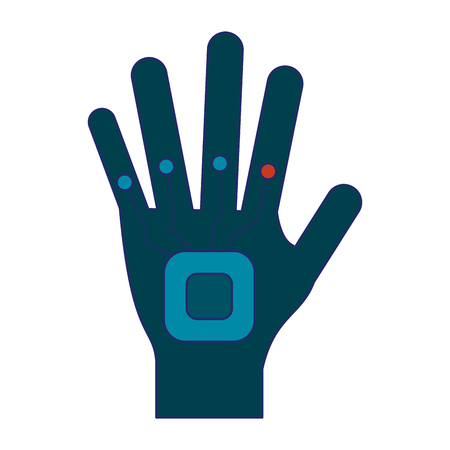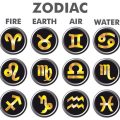1. Introduction to Palmistry in Modern American Culture
Palmistry, also known as chiromancy or palm reading, is the ancient practice of interpreting the lines, shapes, and mounts on the palm to gain insight into a persons character and future. While its roots stretch back thousands of years to India, China, and Egypt, palmistry has found a unique place in modern American culture. Today, its not uncommon to see palm readers at local fairs, psychic shops, or even featured in popular media.
Historically, palmistry traveled through Europe during the Middle Ages and eventually became intertwined with Western occult traditions. In America, it gained popularity during the 19th and early 20th centuries when spiritualism was at its peak. Over time, palmistry evolved from a mystical art into a form of self-exploration and entertainment embraced by people from all walks of life.
In contemporary America, palmistry appeals to those curious about themselves and their potential. Some seek guidance for relationships or career choices; others are simply intrigued by the mystery of what their hands might reveal. For many, it’s a fun and social activity—a way to spark conversation at gatherings or learn something new about friends.
Why Do People Turn to Palmistry Today?
| Reason | Description |
|---|---|
| Self-Discovery | People enjoy learning more about their personality traits and strengths through hand analysis. |
| Curiosity | The intrigue of hidden meanings in everyday features like our palms draws people in. |
| Entertainment | Palm readings are often shared at parties or events for fun and amusement. |
| Guidance | Some seek advice about life decisions or reassurance about the future. |
Whether taken seriously or just for fun, palmistry continues to fascinate Americans today. Its blend of history, symbolism, and personal insight keeps it relevant in a fast-paced world where self-understanding is more valued than ever.
2. The Life Line: Separating Myths from Reality
What Is the Life Line?
The Life Line is one of the most famous lines people look for when exploring palmistry. It’s the curved line that arcs around the base of your thumb and encircles the ball of your palm. Many Americans have heard myths about this line, like it predicting how long you’ll live, but let’s break down what the Life Line really means.
What Does the Life Line Actually Show?
Contrary to popular belief, the Life Line doesn’t reveal your exact lifespan. Instead, it gives insight into your overall energy, health trends, and how you respond to major life events or changes. Here’s a simple breakdown:
| Life Line Feature | Possible Meaning |
|---|---|
| Long and Deep | Strong vitality and energy; generally good stamina |
| Short but Deep | Efficient energy use; not about lifespan, but about quality and zest for life |
| Faint or Broken | Sensitivity to stress or possible periods of low energy; not a prediction of illness |
| Branches Upward | Positive changes, new opportunities, growth after challenges |
| Branches Downward | Times when you may have felt drained or faced setbacks—think of these as learning experiences rather than doom-and-gloom moments |
Busting Common Myths About the Life Line
- Myth: The Life Line predicts your death date.
This is totally false! Palmists agree that no hand can show exactly how long you’ll live. - Myth: A short line means a short life.
A short line might mean you’re efficient with your energy or prefer living in the moment—it doesn’t say anything about longevity. - Myth: Breaks are always bad news.
A break can simply represent big life changes, moves, or shifts—not necessarily accidents or health crises.
How Can You Use This Info?
If you’re curious about your own Life Line, use it as a tool for self-reflection. Think about how you handle stress, change, and new beginnings. In American culture, we love stories of resilience and transformation—the Life Line is just another way to explore those themes within yourself.

3. The Heart Line: Insights into Love and Emotions
Exploring the Heart Line
The heart line is one of the most talked-about features in palmistry, especially for anyone curious about their emotional life and relationships. This line, usually found at the top of your palm running horizontally under your fingers, is believed to reveal details about how you express love, connect with others, and manage your emotions.
What Does the Heart Line Show?
In American palmistry traditions, the heart line is seen as a window into your emotional personality. Its length, shape, and even small marks can give clues about your approach to love and relationships. Heres a simple breakdown:
| Heart Line Feature | What It Might Mean |
|---|---|
| Long & Curved | Open-hearted, expressive, values deep connections |
| Straight & Short | More reserved with emotions, practical in relationships |
| Breaks or Gaps | Past emotional upsets or changes in relationship patterns |
| Branches Upwards | Positive outlook on love, easily forms new bonds |
| Branches Downwards | Tendency towards disappointment or self-doubt in love |
Reading Your Own Heart Line
If youre curious about what your heart line says about you, start by looking at which hand to use. In American culture, its common to read the dominant hand (the one you write with) for current traits and experiences. The non-dominant hand may reflect inherited tendencies or early life patterns.
Key Questions to Ask When Looking at Your Heart Line:
- Is the line deep and clear or faint?
- Does it curve up toward your fingers or run straight across?
- Are there any branches, breaks, or special markings?
Palmists believe that these features can tell you not just about how you feel love but also how you handle heartbreak, friendship, and trust. For many Americans exploring palmistry, understanding the heart line is a fun way to reflect on personal connections and emotional growth.
4. The Head Line: What Handwriting Can Tell You About the Mind
If you’ve ever been curious about how your palm can reveal secrets about your personality, the Head Line is a great place to start. In palmistry, the Head Line runs horizontally across the middle of your palm, usually below the Heart Line. Many Americans see this line as a window into how we think, solve problems, and handle stress.
Examining the Head Line
The Head Line is all about your mind. It’s believed to reflect your intelligence, decision-making style, creativity, and even aspects of your mental health. While everyone’s hand is different, there are a few common shapes and lengths that readers look for:
| Feature | What It Suggests |
|---|---|
| Long & Deep | Strong focus, analytical mind, enjoys solving problems |
| Short & Shallow | Practical thinker, prefers action over reflection |
| Straight | Logical approach, realistic and grounded thinking |
| Curved | Creative flair, imagination, openness to new ideas |
| Breaks or Chains | Mental stress, possible anxiety or periods of confusion |
| Fork at End (Writer’s Fork) | Flexible thinker, ability to see multiple sides of an issue |
Linking the Head Line with Intelligence and Creativity
A strong and clear Head Line doesn’t mean someone is a genius in the traditional sense—intelligence comes in many forms! A straight line may show practical smarts and logical reasoning, while a curved one points to creative thinking. Some people have a combination of both traits in their hands.
Mental Health Insights from Your Palm?
Palm readers sometimes look at breaks or wavy patterns in the Head Line as signs that someone might be dealing with stress or emotional ups and downs. Of course, this isn’t a medical diagnosis—it’s just one way people use palmistry to reflect on their well-being.
5. Beyond the Basics: Variations, Minor Lines, and Cultural Skepticism
Exploring Other Significant Hand Features
While most palmistry readings start with the major lines—the heart, head, and life lines—there are many more features on your hand that can add depth to a reading. These include minor lines like the fate line, sun line, marriage lines, and even smaller markings that some believe hold meaning. Heres a quick overview of some commonly referenced minor lines:
| Minor Line | Where Its Found | Common Interpretation |
|---|---|---|
| Fate Line | Runs vertically up the center of the palm | Career path, life direction, sense of purpose |
| Sun (Apollo) Line | Runs parallel to the fate line toward the ring finger | Creativity, fame, or happiness |
| Marriage Lines | Small horizontal lines under the pinky finger | Significant relationships or partnerships |
| Health Line | Diagonal from the base of the palm to below the pinky | General well-being and stress levels |
The Role of Free Will in Palmistry
A key discussion in modern American interpretations of palmistry is about free will versus destiny. While palmistry looks at patterns and tendencies shown by your hands, most practitioners agree that nothing is set in stone. Your choices, habits, and mindset can all influence your path. Think of your hand as a map—it may show possible routes, but you still decide which one to take.
Free Will vs. Fate: What Do Americans Believe?
| Concept | Description in Palmistry Context | Typical American Viewpoint |
|---|---|---|
| Fate/Destiny | Your future is predetermined by your hand lines. | Skeptical; most see this as symbolic rather than literal. |
| Free Will/Choice | You control your own path regardless of what your hand shows. | Mainstream belief; people value personal agency and responsibility. |
Cultural Skepticism: The American Approach
Palmistry in America is often met with curiosity but also skepticism. Many Americans see palm reading as a fun activity at fairs or parties rather than a scientific practice. Culturally, there’s a big emphasis on critical thinking and evidence-based beliefs. It’s not uncommon for someone to enjoy having their palm read while not taking the predictions too seriously.
Palmistry in Everyday American Life:
- Entertainment: Often used for fun at social events or as icebreakers.
- Counseling Tool: Some holistic practitioners use it as a way to open conversations about life goals.
- Skepticism: Most Americans see it as unproven and interpret it lightly.
- Diversity: Attitudes vary widely depending on personal beliefs and cultural backgrounds.
Interpreting Findings Responsibly
If you’re interested in palmistry or sharing it with friends, remember to approach readings with sensitivity and responsibility. Avoid making absolute statements about someone’s future. Instead, use what you see as a way to encourage reflection and self-discovery. In American culture, it’s especially important to respect individual beliefs—some may find comfort or inspiration in a reading, while others may prefer to keep things lighthearted.


